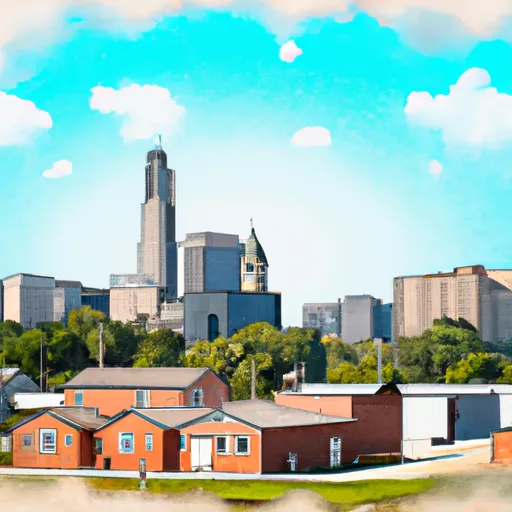-
 Snoflo Premium
Snoflo Premium
Get unlimited access to all our content
With no Ad interruptions! - Start Your Free Trial Login with existing account
Timewell
Eden Index
Climate
8.1
•
Recreation
2.0
•
Community
•
Safeguard
3.9/10

Timewell, Illinois is a small town located in Brown County, in the western part of the state. The climate in Timewell is classified as humid continental, characterized by warm summers and cold winters. Average temperatures range from 25°F (-4°C) in the winter to 85°F (29°C) in the summer. Precipitation is evenly distributed throughout the year, with an average of 40 inches (102 cm) annually.
The hydrology in Timewell is primarily influenced by the nearby Illinois River and its tributaries. These water bodies provide opportunities for activities such as fishing, boating, and swimming. The Illinois River is known for its diverse fish population, including species like bass, catfish, and walleye.
Timewell also offers various outdoor recreation opportunities. The surrounding natural areas and parks provide options for hiking, camping, and wildlife viewing. Residents and visitors can explore the trails in nearby Siloam Springs State Park or enjoy a picnic by the lake. The town's proximity to the river also allows for water-based activities like kayaking or canoeing.
Overall, Timewell provides a pleasant climate, diverse hydrology, and a range of outdoor recreational opportunities for nature enthusiasts to enjoy.
What is the Eden Index?
The Snoflo Eden Index serves as a comprehensive rating system for regions, evaluating their desirability through a holistic assessment of climate health, outdoor recreation opportunities, and natural disaster risk, acknowledging the profound impact of these factors on livability and well-being.
Climate Health Indicator (CHI): 8.1
Timewell receives approximately
956mm of rain per year,
with humidity levels near 83%
and air temperatures averaging around
12°C.
Timewell has a plant hardyness factor of
5, meaning
plants and agriculture in this region thrive during a short period during spring and early summer. Most
plants will die off during the colder winter months.
By considering the ideal temperature range, reliable water supplies, clean air, and stable seasonal rain or snowpacks, the Climate Health Indicator (CHI) underscores the significance of a healthy climate as the foundation for quality living.
A healthy climate is paramount for ensuring a high quality of life and livability in a region, fostering both physical well-being and environmental harmony. This can be characterized by ideal temperatures, reliable access to water supplies, clean air, and consistent seasonal rain or snowpacks.
Weather Forecast
Streamflow Conditions
Lower Illinois
Area Rivers
Lower Illinois
Snowpack Depths
Lower Illinois
Reservoir Storage Capacity
Lower Illinois
Groundwater Levels
Recreational Opportunity Index (ROI): 2.0
The Recreational Opportunity Index (ROI) recognizes the value of outdoor recreational options, such as parks, hiking trails, camping sites, and fishing spots, while acknowledging that climate plays a pivotal role in ensuring the comfort and consistency of these experiences.
Access to outdoor recreational opportunities, encompassing activities such as parks, hiking, camping, and fishing, is crucial for overall well-being, and the climate plays a pivotal role in enabling and enhancing these experiences, ensuring that individuals can engage in nature-based activities comfortably and consistently.
Camping Areas
| Campground | Campsites | Reservations | Toilets | Showers | Elevation |
|---|---|---|---|---|---|
| North Rec Composite | 15 | 97 ft | |||
| Great River Road State Park | None | 150 ft | |||
| Leroy Percy State Park | None | 108 ft | |||
| Lake Charlie Capps | None | 146 ft | |||
| Little Sunflower River | None | 107 ft | |||
| Lamar Dixon Expo RV Center | 300 | 11 ft | |||
| Rocky Springs - Natchez Trace Pkwy | 22 | 235 ft | |||
| Clear Spgs Rec Area | 45 | 317 ft | |||
| Grand Gulf Military Park | 42 | 238 ft | |||
| South Recreation Composite | 100 | 140 ft |
Nearby Ski Areas
Catastrophe Safeguard Index (CSI):
The Catastrophe Safeguard Index (CSI) recognizes that natural disaster risk, encompassing floods, fires, hurricanes, and tornadoes, can drastically affect safety and the overall appeal of an area.
The level of natural disaster risk in a region significantly affects safety and the overall livability, with climate change amplifying these risks by potentially increasing the frequency and intensity of events like floods, fires, hurricanes, and tornadoes, thereby posing substantial challenges to community resilience and well-being.
Community Resilience Indicator (CRI):
The Community Resilience Indicator (CRI) recognizes that education, healthcare, and socioeconomics are crucial to the well-being of a region. The CRI acknowledges the profound impact of these elements on residents' overall quality of life. By evaluating educational resources, healthcare accessibility, and economic inclusivity, the index captures the essential aspects that contribute to a thriving community, fostering resident satisfaction, equity, and social cohesion.

